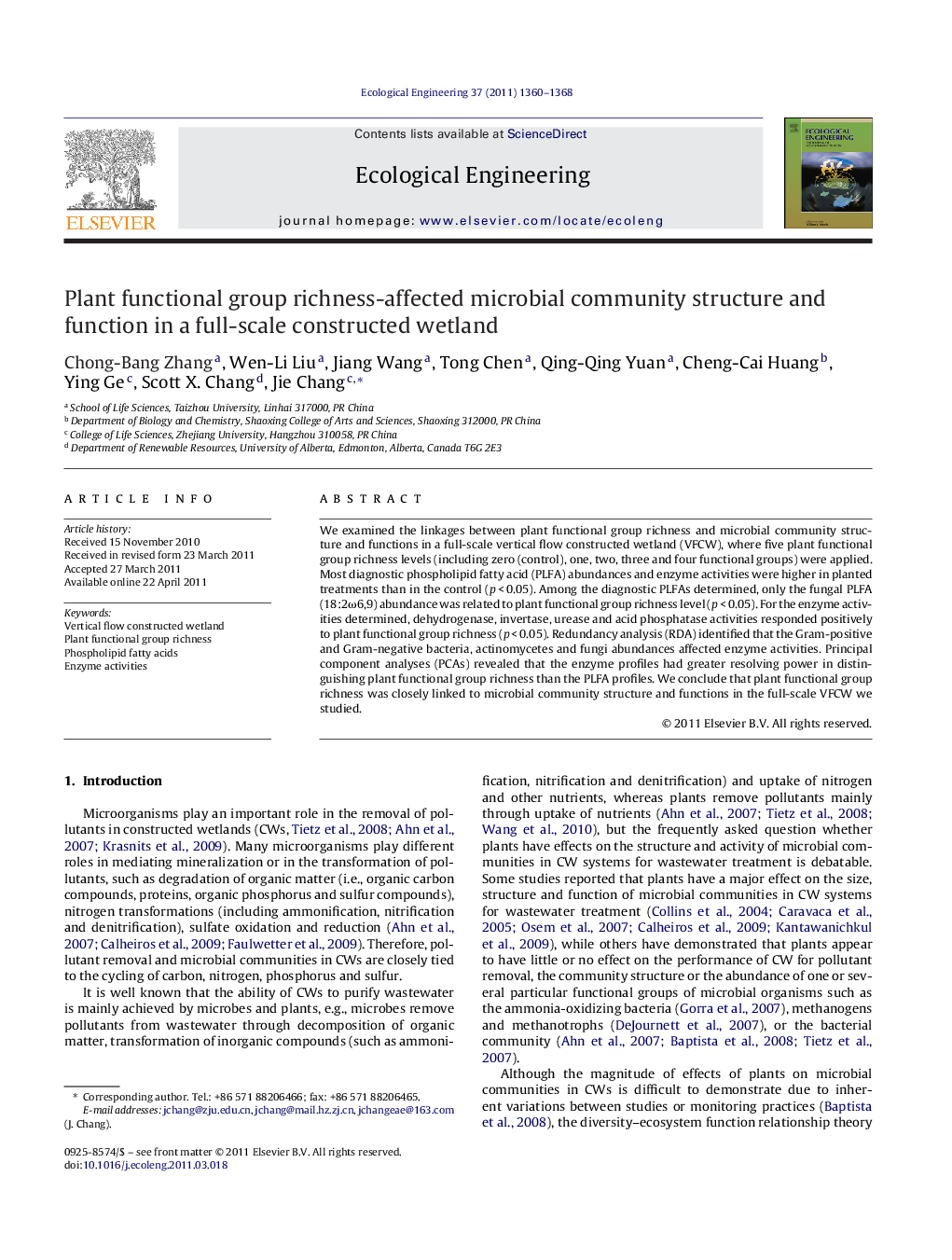| Article ID | Journal | Published Year | Pages | File Type |
|---|---|---|---|---|
| 4390249 | Ecological Engineering | 2011 | 9 Pages |
We examined the linkages between plant functional group richness and microbial community structure and functions in a full-scale vertical flow constructed wetland (VFCW), where five plant functional group richness levels (including zero (control), one, two, three and four functional groups) were applied. Most diagnostic phospholipid fatty acid (PLFA) abundances and enzyme activities were higher in planted treatments than in the control (p < 0.05). Among the diagnostic PLFAs determined, only the fungal PLFA (18:2ω6,9) abundance was related to plant functional group richness level (p < 0.05). For the enzyme activities determined, dehydrogenase, invertase, urease and acid phosphatase activities responded positively to plant functional group richness (p < 0.05). Redundancy analysis (RDA) identified that the Gram-positive and Gram-negative bacteria, actinomycetes and fungi abundances affected enzyme activities. Principal component analyses (PCAs) revealed that the enzyme profiles had greater resolving power in distinguishing plant functional group richness than the PLFA profiles. We conclude that plant functional group richness was closely linked to microbial community structure and functions in the full-scale VFCW we studied.
► Fungal abundance in constructed wetland increased with plant functional richness. ► Dehydrogenase, invertase, urease and acid phosphatase response to fungal abundance. ► Plant functional group richness linked to microbial community structure and function.
